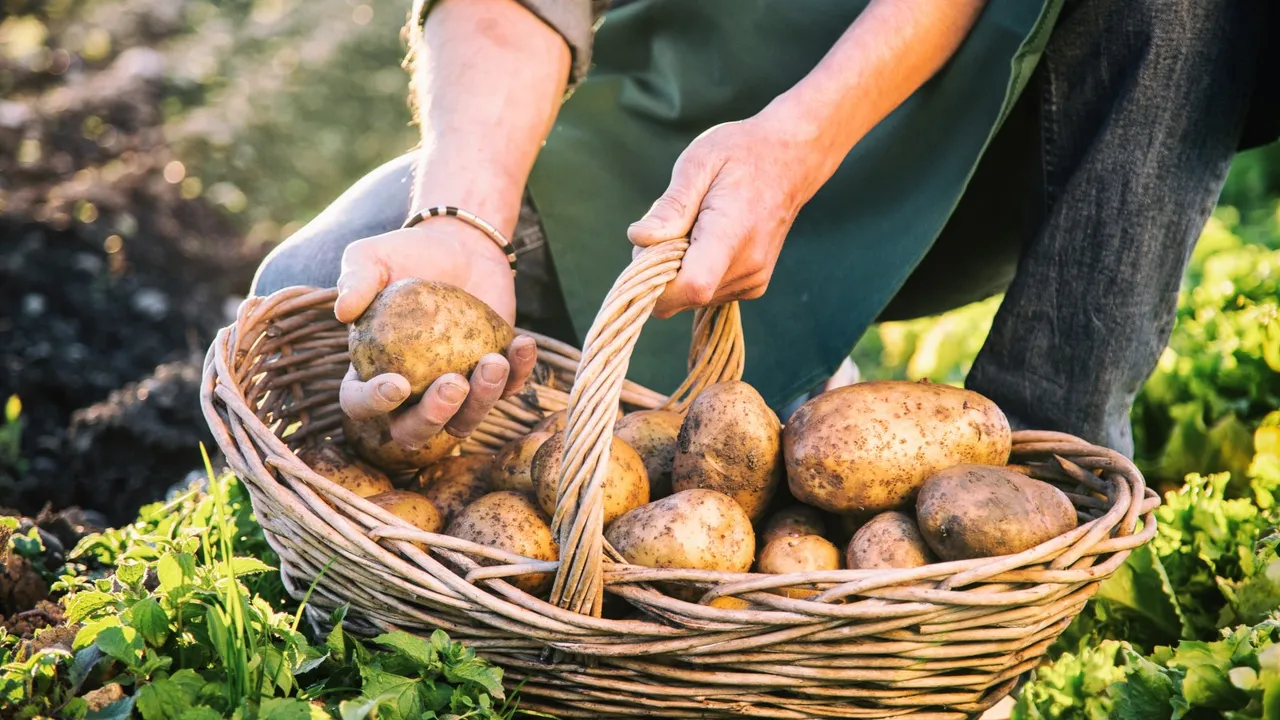Doing a soil test before fertilizer for potatoes is an essential first step. Take some soil samples, air-dry them out before sending them in for testing.
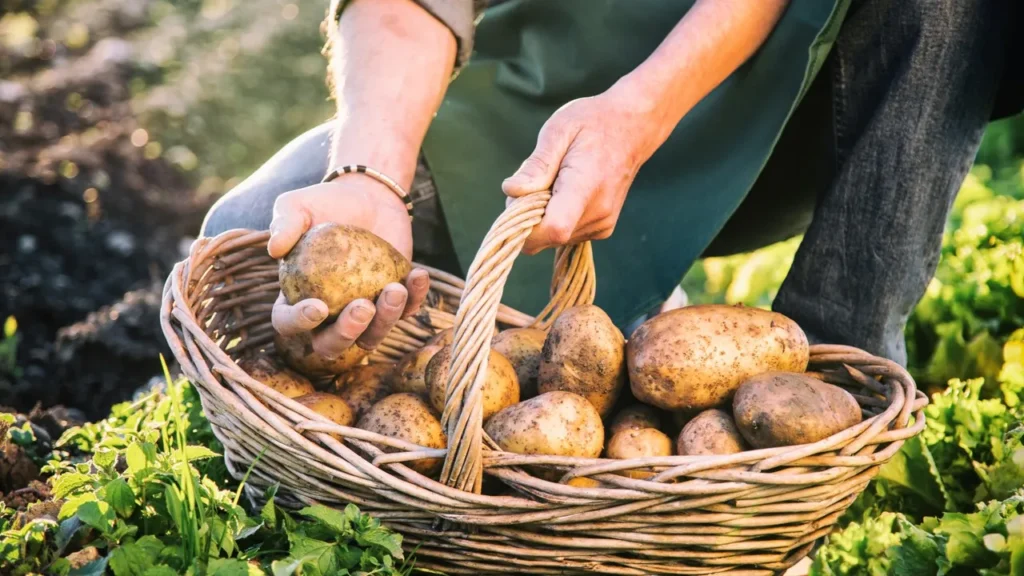
Potatoes require a balanced fertilizer that contains less nitrogen and more phosphorus and potassium, an optimal blend is 5-10-10 or 8-24-24. Avoid adding manure too close to planting time as too much organic matter could harm their roots.
Expert tips for feeding your crops and big harvests
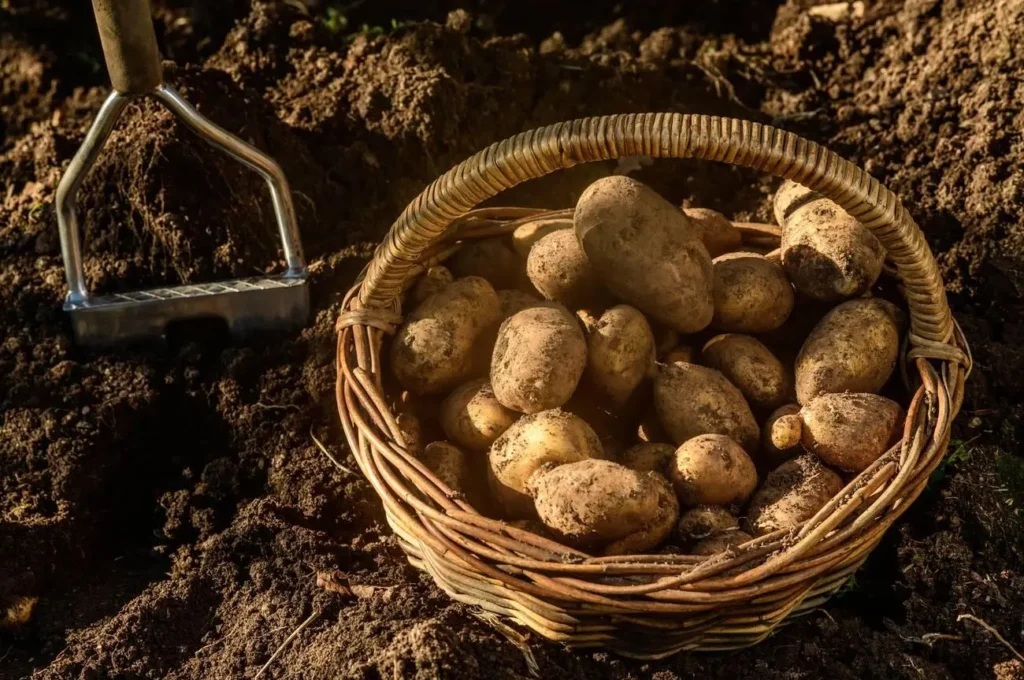
Potatoes have specific nutrient needs and must receive sufficient amounts of the appropriate nutrients in order to achieve high yields. Over-fertilisation should be avoided at all costs as yellowed leaves indicate an excess of minerals; how much fertilizer needs to be applied depends on both type and location, with soil conditions and climate dictating which nutrients are required.
An NPK fertilizer is key to healthy plant development. When selecting commercial chemical feed, look for one with higher potassium and phosphate than nitrogen levels – check its three number code on the bag – in order to achieve maximum productivity from your potato crop. Nitrogen helps promote foliage growth while phosphorus and potassium support tuber growth underground.
Fertiliser should be applied prior to planting seed potatoes; roughly one week prior is ideal. This gives your crop the boost they require for rapid growth and tuber formation.
At 6″-8″, or roughly two weeks prior to harvest, your second application of feed should take place. Water-soluble fertiliser is ideal since you can use a hose-end sprayer to get its nutrients into the soil. Follow manufacturer’s directions regarding dosage as too little will not benefit plants while too much may burn or harm them.
Fertilizer for potatoes
Fertilization is vital for healthy potato growth. It can be done with manure or slow-release commercial plant fertilizers like Kynoch All Purpose Fertilizer, rich in potassium (K).
Organic matter such as compost or homemade manure provides an excellent nitrogen (N) source, gradually released without leaching into the environment, promoting healthy potato growth.
During planting, avoid adding fresh manure or homemade compost too close to the roots, as it can damage them and increase disease risks like scab. Instead, use a slow-release all-purpose plant fertilizer with plenty of potassium to ensure potatoes reach the fruiting stage and grow larger.
Sow green manure in autumn for decomposition over winter, providing potatoes with ample nitrogen while suppressing weeds and enhancing soil structure. Opt for natural, organic plant food over mineral fertilizers to avoid over-fertilization and harm to soil life and the potato lifecycle
Fertilizing your potatoes
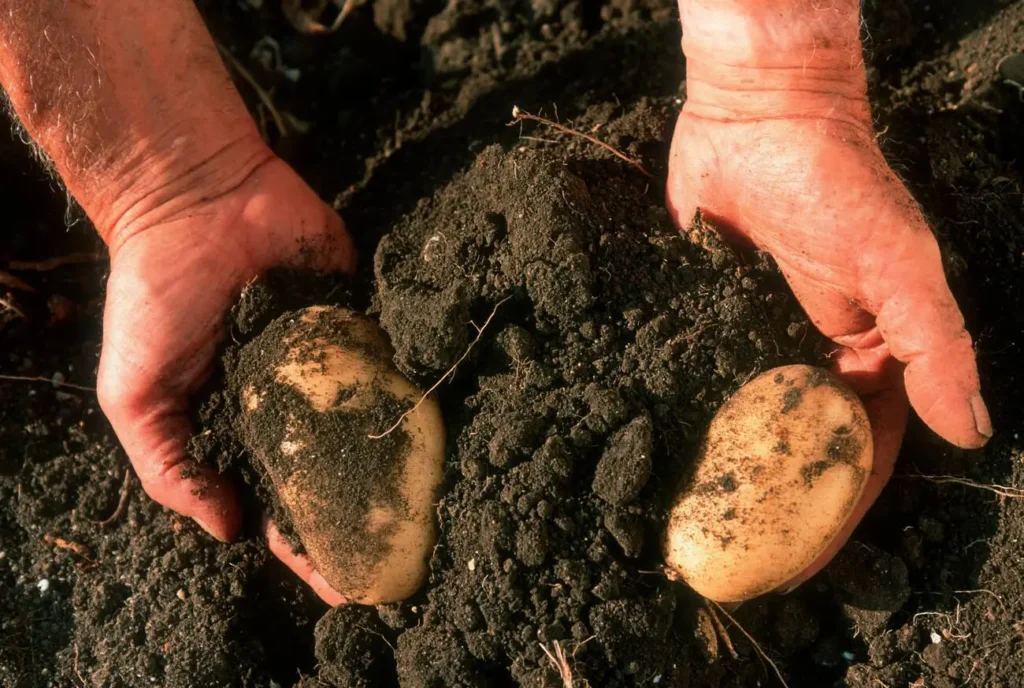
To maximise a potato plant’s yield, it requires nutrients in its soil that feed both its foliage and tubers. Unfortunately, many gardeners fail to provide an adequate supply of nutrients; quick-growing crops such as potatoes require high-quality feed to avoid deficiencies and ensure successful yields.
When selecting a chemical fertilizer for your potatoes, search for one with higher levels of phosphorus and potassium than nitrogen, such as 5-10-10 or 8-24-24 blends; these are more suited to this specific crop than general purpose ones and will encourage production while still giving plants enough energy for an abundant harvest.
Over-fertilizing is crucial to avoid, as it can lead to plants focusing on lush leaf growth rather than developing substantial produce, potentially resulting in diseases like blight. Signs of over-fertilization include a white “crust” buildup on the soil surface and yellowing or wilting leaves.
Organic matter such as compost and well-rotted manure provide potatoes with nutrients naturally, improving soil structure and preventing nutrient leaching. Green manure, like legumes such as peas, clovers, and vetches, can also offer vital nutrition before planting potatoes in the following spring.
Feeding your potatoes
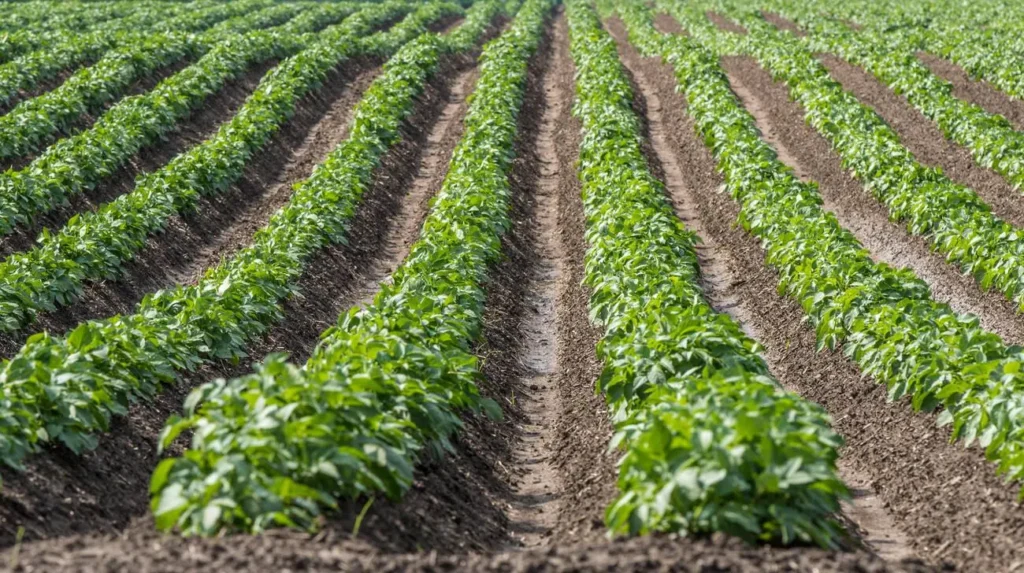
Potatoes are an energetic crop that need plenty of nutrition throughout their growing season, so having an effective feeding schedule in place is critical to producing a bumper harvest.
Fertilising potatoes at their tuber development stage provides them with everything they need to develop fully and thrive. Fertilising provides them with all the nutrition they require for fast growth and development.
As soon as your plants start developing their foliage, it’s important to stop feeding and watering potatoes in order to prevent fungal disease and make harvesting simpler. Allow the soil to dry out slightly as soon as this stage has passed and harvest will become much simpler.
Once your potato plants start to mature, it’s time to hill up the rows by moving soil from furrows into rows at an upward slope. This protects young sprouting potato plants and provides another chance to apply phosphorus and potassium fertilizer.
As soon as you’re ready to hill, use a low-nitrogen and high-phosphorous feed. Try to stay away from products with high salt levels that could damage the soil; opt instead for ones easily absorbed by roots.
